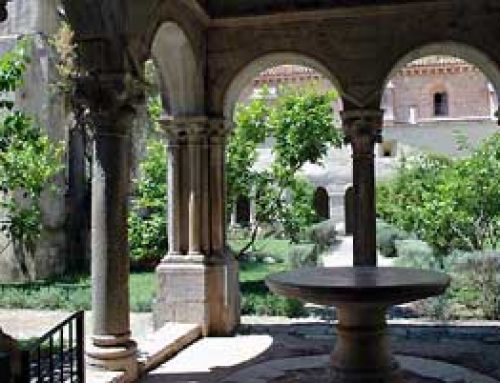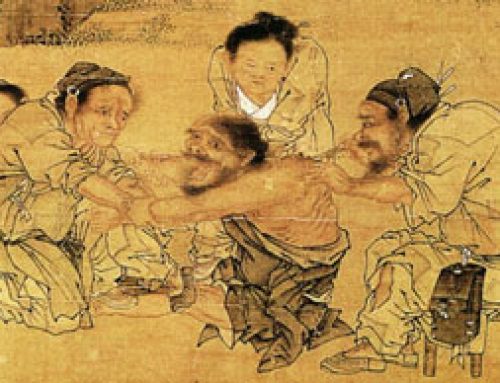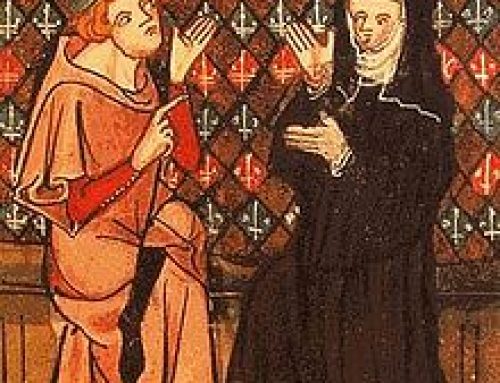
Medieval university
Fewer universities than before
With the fall of Rome, the universities of northern Europe closed too. The end of Mediterranean trade meant that nobody could afford to get an advanced education anymore. In Europe, there were only small schools run by the Catholic church. Or independent scholars gave public lectures and tutored private students. Or there were Jewish yeshivas.
Medieval Europe’s schools
Education in ancient Rome
The University of Alexandria
Medieval Islamic madrassas
Jewish yeshivas
All our medieval Europe articles
Going to college in the Islamic Empire
The nearest universities were in the Islamic Empire. The few Europeans who could afford it went to Cordoba, in Spain, or to or to Cairo in Egypt, or to Baghdad, in what is now Iraq, to get an education. Often they stayed there. Adelard of Bath got an education in West Asia. He came back to England in 1126 to translate Euclid from Greek to Latin. Robert of Chester learned algebra at Cordoba. Fibonacci of Pisa learned about Arabic numbers at a university in Algiers in the late 1100s AD.
Who was Fibonacci?
Islamic Spain
The University of Fez
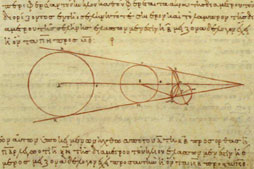
A copy of Aristarchus’ work on parchment from Constantinople, about 950 AD, showing the relative sizes of the sun, the Earth, and the moon
New European universities open
But by Fibonacci’s time, Europe was beginning to be a richer place again. More and more families could afford to invest some money in a child’s education. One child from a well-off family might be chosen because they were smarter or more hard-working. When they were about fourteen, they would go to a university to get an education. Then they could try to break into a higher social class and make the family’s fortune.
Medieval European economy
Early medieval universities
At first a “university” was just an organization of students or professors – faculty – like a club or a union. Usually the professors charged admission for public lectures, and also took students for private one-on-one tutoring. In some places, students paid teachers directly, as we do with music lessons today. In other places, the church paid the teachers.
Who was Peter Abelard?
St. Germain des Pres
Peter Abelard, for example, taught at St. Germain’s abbey school in Paris in 1050 AD. Gradually the universities themselves organized to charge tuition and pay the teachers. In the late 1000s, universities got started in Bologna (in Italy), in Paris, and at Oxford (in England). The 1100s added a university at Modena, also in Italy.
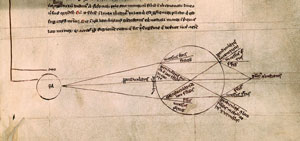
Roger Bacon’s diagram of a human eye
More universities in the 1200s
But suddenly in the 1200s there were lots more universities: in England (at Cambridge), in France (at Montpellier, Toulouse, and Orleans), in Spain (at Palencia and Salamanca, and at Coimbra in Portugal), in Italy (at Naples and Padua and Siena). When the Islamic sultanates got poorer after the Mongol invasions of the 1200s, people couldn’t afford to send their boys to madrassas anymore. Europe became the new center of scholarship.
Genghis Khan and the Mongols
Late Medieval Italy and Naples
Thomas Aquinas
Roger Bacon
Fibonacci and medieval math
Late medieval universities
By the 1300s, a lot of governments even in poorer parts of Europe wanted to have universities to show that they were on top of things. A new university opened at Pisa in Italy, but universities also started up in Prague, in Vienna, in Heidelberg (Germany), and in Scotland.
Late medieval Hungary
Louis I of Hungary, to show that he was really a big success and that Hungary was a civilized country, opened a university in Pecs in 1367, but as it turned out he didn’t really have enough money to fund it, and it closed less than 20 years later.
